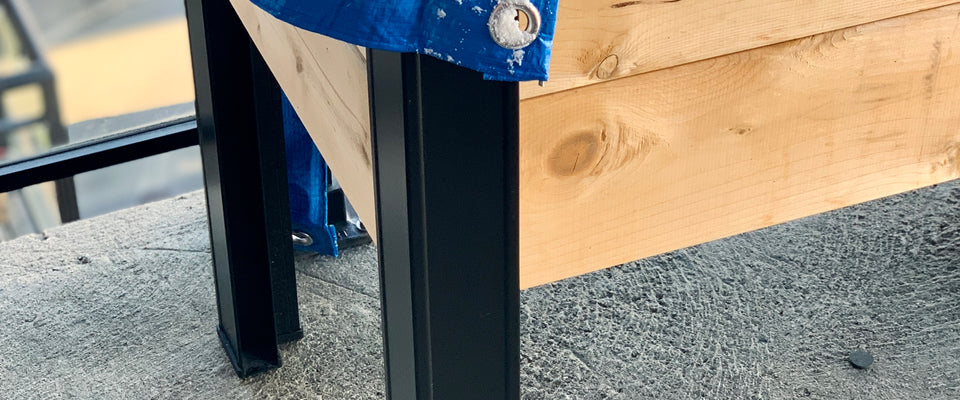How to Winterize a Korto Planter Box

The time has come to put the garden to rest after a successful gardening season that yielded plenty of fresh vegetables and beauty! It may be tempting, with so many other fall landscaping tasks to complete and fun fall activities, to leave your raised planter alone and let nature take its course. But we suggest you take the time to winterize your planter box, especially for planters that were assembled directly on the ground, since you cannot just empty at fall and fill in the planter with soil again at spring like you could do for a raised planter. But note that the following suggestions apply to all types of planters. How you treat your on-ground or raised planter in the fall can affect how well your garden performs in the spring!
The first step in winterizing raised planters is to pull up all warm-season plants. Note that some warm-season plants last longer in the season. For example, mint will die at first frost, while basil can survive a not so warm period throughout the fall. After pulling up the plants, you can undoubtedly use your plants and herbs right away, either by creating a recipe out of it or storing it by drying it for the winter months. See Korto’s blog post How to Preserve Your Fresh Herbs Longer. The plants and herbs that you think you won’t be using can be composted.
As you clear out the planters, make notes about each specie of plant, vegetable and herb. Note down any pest difficulties, and anything else you'd like to remember for next year's warm growing season, so you can keep an eye on any specific issues that may arise again at that time.
Another step would me to remove any plant supports like stakes and trellises for tomatoes and other creeper plants, since the supports can be delicate structures and could get damaged during the cold months do to heavy snow falls and freezing temperatures.
Once the spent plants and supports have been removed, top-dress each raised planter with 1 inch of homemade compost or leaf mould to ensure that your soil is nutrient-rich in time for the next growing season.
You can also plant crops that can be harvested throughout the winter (if you live in a not-too-cold location or if you have a greenhouse) and into the following spring (if you live in Quebec or where winters are very cold more intense). Some of these plants are garlic, radish, carrots, lettuce and kale.
After these steps, you can finally conclude the winterization of you planter box by covering it with a tarp cover. Don’t forget to plan on removing the snow that will accumulate on top of your planter, since we don't want to damage the structure of the planter or the new shoots planted for the winter and spring, if any!
Korto wishes you a good fall and winter!